Operation Paperclip: ( Part 3 ) Was it worth it? - Occupied Germany, 1945 - 1949
Jan 13, 2018 03:56:32 #
During early 1947, aggressive investigators in the Justice Department and the media (especially columnist and broadcaster Drew Pearson) began intensely challenging Operation Paperclip. They demanded that the program's Nazi military scientists be returned to Occupied Germany.
The Joint Intelligence Objectives Subcommittee (JIOS), the Pentagon administrators of Paperclip, decided to take their planned expansions underground. The "official termination" of Paperclip was announced in mid-1947, with vague promises to return the scientists to Germany.
However, they would face denazification trials in German courts, embarrassing to our military Occupation.
On September 20, 1947, General Lucius Clay (commander of U.S. Forces in Occupied Germany) sent a secret telegram to the War Department including this final comment: "It would be much better to permit them to remain in the U.S. as Nazis without bringing them to trial."
By then Paperclip had assigned hundreds of Nazi scientists and their families throughout the United States. Much of their work was top-secret and distributed among a variety of military and industrial research laboratories, who asked for more, so JIOS resumed covert immigration.
Corporations and universities were encouraged to help Paperclip by employing some of the immigrants. Eventually, Paperclip had sixty U.S. companies eagerly participating because all the Paperclippers came with expedited security clearances for any classified projects. Besides, they usually were paid significantly less than their American colleagues. In the long run, however, most got substantial pensions, and some became corporate executives.
The first hundred rocket scientists, recruited in Europe by Col. Holger Toftoy, were accompanied by ninety-plus giant V-2 rockets. They spent five years in Texas and New Mexico with the laboratories of the Army Ordnance R&D Service before moving to Alabama. America owed its missile defense systems to their skills.
Eighty-six Nazi aeronautical scientists and engineers were recruited in Germany by test pilot Col. Donald Putt in 1945-46 and brought to Wright (later Wright-Patterson) Army Air Base near Dayton, Ohio. Many tons of special gear, including experimental aircraft, supersonic wind tunnels, jet and rocket engines, etc. were brought to the U.S., plus Nazi pilots experienced in the new jet age. Putt estimated they were ten years ahead of us.
Dozens of Nazi scientists specializing in poison gases were recruited by Gen. Charles Loucks to work on chemical weapons in the highly secretive Edgewood Arsenal in Maryland. They developed a new gas, sarin, which they tested on thousands of U.S. Army "volunteers," and ran controversial tests of a nerve agent called LSD. Sarin was used in Vietnam in cluster bombs.
Other military research facilities employing Nazi Paperclippers included the Signal Corps (24 scientists at Fort Monmouth, NJ, the Air Force School of Aviation Medicine at Brooks Air Force Base in Texas (dozens of Nazi physicians, including some who were involved in deadly human experiments in Dachau), and ---via the U.S. Bureau of Mines -- the Fischer-Tripsch chemical plant in Missouri (seven synthetic fuel scientists).
The rocket scientists, headed by Wernher von Braun, were the chief poster boys among the Nazi scientists, even appearing in three Walt Disney science films promotin space travel. The other scientists, especially in the Air Force, Chemical Corps and Signal Corps facilities, were usually kept behind "Top Secret" signs. The American public had no idea of the scale of Paperclip.
The Russians, however, knew the score. They had an inside man. The top American officer in Operation Paperclip was a Russian mole.
Lt. Col. William Henry Whalen, the director of JIOS and the commander of Paperclip between July, 1959 and his retirement in February, 1961, stole and sold thousands of secret documents to Russian agents.
During his 19-month tenure, and for two more years after his retirement, Col. Whalen blithely roamed at will through the "secure" offices of the Joint Chiefs of Staff in the Pentagon, physically stealing secret manuals and reports dealing with atomic, missile and bomber secrets, among others. He met his Russian contact, Col. Sergei Edemski, every month in shopping center parking lots in Arlington, delivering so many secrets that he was unable to give a full accounting during his 1966 closed-doors trial for conspiracy.
Reportedly, Lt. Col. Whalen is the highest placed U.S. military officer ever convicted of espionage against his country.
But because the FBI screwed up in how they obtained his confessions, the Justice Department had to cut him a deal, or Col. Whalen would have gone free. Instead, he got fifteen years (reduced to six by a parole) in a Federal penitentiary, his wife continued to receive his retirement benefits, and he retained the right to be buried in Arlington Cemetary.
He did it for the money, about $14,000.
Meanwhile, don't waste your time looking for a Paperclip budget. Intelligence operations are notoriously lax about such mundane stuff. JIOS was disbanded in 1962. Any Paperclip documents that were not shredded vanished into the National Archives. Nobody in the Intelligence ranks wants to talk about Paperclip.
The Joint Intelligence Objectives Subcommittee (JIOS), the Pentagon administrators of Paperclip, decided to take their planned expansions underground. The "official termination" of Paperclip was announced in mid-1947, with vague promises to return the scientists to Germany.
However, they would face denazification trials in German courts, embarrassing to our military Occupation.
On September 20, 1947, General Lucius Clay (commander of U.S. Forces in Occupied Germany) sent a secret telegram to the War Department including this final comment: "It would be much better to permit them to remain in the U.S. as Nazis without bringing them to trial."
By then Paperclip had assigned hundreds of Nazi scientists and their families throughout the United States. Much of their work was top-secret and distributed among a variety of military and industrial research laboratories, who asked for more, so JIOS resumed covert immigration.
Corporations and universities were encouraged to help Paperclip by employing some of the immigrants. Eventually, Paperclip had sixty U.S. companies eagerly participating because all the Paperclippers came with expedited security clearances for any classified projects. Besides, they usually were paid significantly less than their American colleagues. In the long run, however, most got substantial pensions, and some became corporate executives.
The first hundred rocket scientists, recruited in Europe by Col. Holger Toftoy, were accompanied by ninety-plus giant V-2 rockets. They spent five years in Texas and New Mexico with the laboratories of the Army Ordnance R&D Service before moving to Alabama. America owed its missile defense systems to their skills.
Eighty-six Nazi aeronautical scientists and engineers were recruited in Germany by test pilot Col. Donald Putt in 1945-46 and brought to Wright (later Wright-Patterson) Army Air Base near Dayton, Ohio. Many tons of special gear, including experimental aircraft, supersonic wind tunnels, jet and rocket engines, etc. were brought to the U.S., plus Nazi pilots experienced in the new jet age. Putt estimated they were ten years ahead of us.
Dozens of Nazi scientists specializing in poison gases were recruited by Gen. Charles Loucks to work on chemical weapons in the highly secretive Edgewood Arsenal in Maryland. They developed a new gas, sarin, which they tested on thousands of U.S. Army "volunteers," and ran controversial tests of a nerve agent called LSD. Sarin was used in Vietnam in cluster bombs.
Other military research facilities employing Nazi Paperclippers included the Signal Corps (24 scientists at Fort Monmouth, NJ, the Air Force School of Aviation Medicine at Brooks Air Force Base in Texas (dozens of Nazi physicians, including some who were involved in deadly human experiments in Dachau), and ---via the U.S. Bureau of Mines -- the Fischer-Tripsch chemical plant in Missouri (seven synthetic fuel scientists).
The rocket scientists, headed by Wernher von Braun, were the chief poster boys among the Nazi scientists, even appearing in three Walt Disney science films promotin space travel. The other scientists, especially in the Air Force, Chemical Corps and Signal Corps facilities, were usually kept behind "Top Secret" signs. The American public had no idea of the scale of Paperclip.
The Russians, however, knew the score. They had an inside man. The top American officer in Operation Paperclip was a Russian mole.
Lt. Col. William Henry Whalen, the director of JIOS and the commander of Paperclip between July, 1959 and his retirement in February, 1961, stole and sold thousands of secret documents to Russian agents.
During his 19-month tenure, and for two more years after his retirement, Col. Whalen blithely roamed at will through the "secure" offices of the Joint Chiefs of Staff in the Pentagon, physically stealing secret manuals and reports dealing with atomic, missile and bomber secrets, among others. He met his Russian contact, Col. Sergei Edemski, every month in shopping center parking lots in Arlington, delivering so many secrets that he was unable to give a full accounting during his 1966 closed-doors trial for conspiracy.
Reportedly, Lt. Col. Whalen is the highest placed U.S. military officer ever convicted of espionage against his country.
But because the FBI screwed up in how they obtained his confessions, the Justice Department had to cut him a deal, or Col. Whalen would have gone free. Instead, he got fifteen years (reduced to six by a parole) in a Federal penitentiary, his wife continued to receive his retirement benefits, and he retained the right to be buried in Arlington Cemetary.
He did it for the money, about $14,000.
Meanwhile, don't waste your time looking for a Paperclip budget. Intelligence operations are notoriously lax about such mundane stuff. JIOS was disbanded in 1962. Any Paperclip documents that were not shredded vanished into the National Archives. Nobody in the Intelligence ranks wants to talk about Paperclip.
100 Paperclip rocket scientists at Fort Bliss, TX - 1946
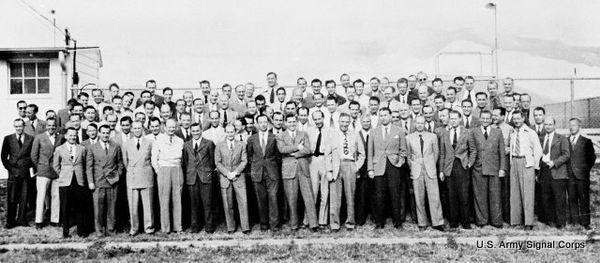
Col. Holger Toftoy recruited the first Nazi rocket scientists in 1945
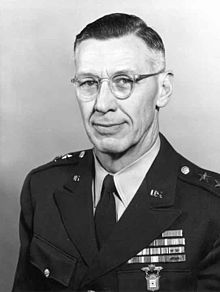
Paperclip's Nazi General Walter Dornberger became a V.P.in Bell Aerosystems
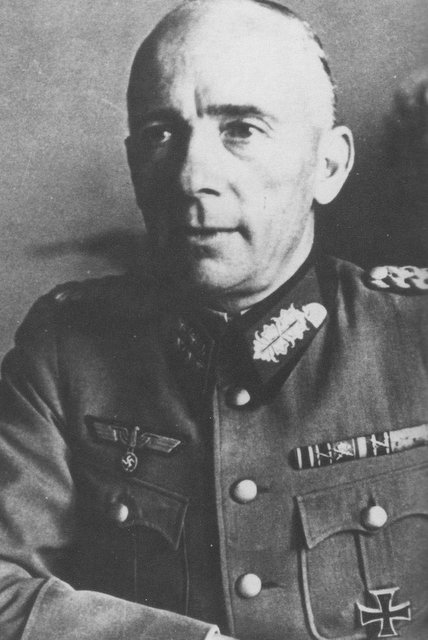
Paperclip's commander after 1966 arrest on espionage charges
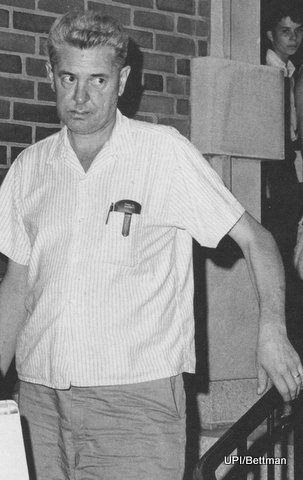
As a colonel in 1945-46, Gen, Donald Putt recruited Nazi aviation scientists
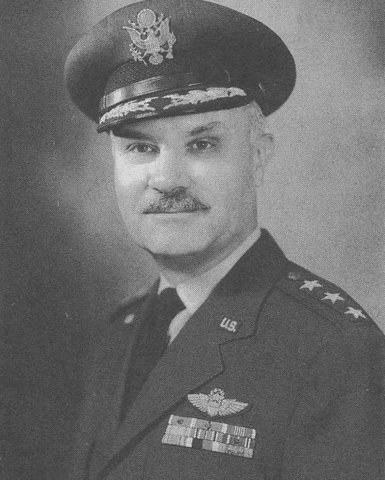
Jan 13, 2018 06:12:38 #
exakta56
Loc: Orford,New Hampshire
Again, thank you for this telling account of post war government maneuvering to compete with the Russians.
Jan 13, 2018 06:34:03 #
RichardQ wrote:
During early 1947, aggressive investigators in the... (show quote)
Thanks for another good article.
Jan 13, 2018 06:51:42 #
Jan 13, 2018 09:42:18 #
mas24
Loc: Southern CA
Great story. I was surprised that Colonel Whalen, still retained the rights to be buried at Arlington Cemetery. I visited there in 2015. Breathtaking experience for me.
Jan 13, 2018 18:19:25 #
exakta56 wrote:
Again, thank you for this telling account of post war government maneuvering to compete with the Russians.
I appreciate your interest, exakta56. I hope I'm helping folks to remember the Military Occupation of Germany -- a critical and IMHO successful American joint military/civilian action that helped Britain, France and our other Allies to face off against Soviet aggression. It wasn't always a calm period for those of us who were there.
Jan 13, 2018 18:24:29 #
jerryc41 wrote:
Thanks for another good article.
Thanks for your continuing interest, Jerry. I expect to move into the problems of untangling the Nazi gold thefts.
Jan 13, 2018 18:29:07 #
fourg1b2006 wrote:
Wow...that was something.
Glad you enjoyed this article, fourg1b2006! I'll try to keep going with more on the Occupation's trials and tribulations.
Jan 13, 2018 18:40:25 #
mas24 wrote:
Great story. I was surprised that Colonel Whalen, still retained the rights to be buried at Arlington Cemetery. I visited there in 2015. Breathtaking experience for me.
Thank you for your comment, mas24. I understand from comments by some of Whalen's colleagues that his mother had connections in the government and planned to see her son in a cabinet post. At least, that's what he reportedly told them. Whalen was a chronic alcoholic and habitually in debt during the espionage period, leading me to wonder what possessed the Joint Chiefs to assign him such responsibilities.
Jan 14, 2018 08:24:56 #
Interesting narrative. I’d heard of “paperclip” but didn’t really know much about it.
Jan 14, 2018 09:03:58 #
I really like WW2 history, especially the technical side of it. Its amazing how thecnological advance nation became such screw up in their decision making. If they would of stay at peace they would of been the most advance industrial nation in the world, what a waste. And even at war, they where so stupid at the top with bad decision making. They had it all, but ended up in ruins. Good for us but what a waste in human suffering.
Jan 14, 2018 09:40:37 #
Richard thanks again.... I am amazed at the info that you have wrote about, thank you........can't wait till the next one.......
Jan 14, 2018 09:47:28 #
Your statements about chemical warfare are incorrect. Sarin was not developed by the US and was never used in any US weapon. Certainly not in cluster bombs in Vietnam. LSD is not a nerve agent.
Jan 14, 2018 09:59:59 #
RichardQ wrote:
During early 1947, aggressive investigators in the... (show quote)
Thanks so much for sharing. That is very interesting information.

Jan 14, 2018 10:29:03 #
1Feathercrest
Loc: NEPA
Lots of information, some of which is erroneous. Many ungrammatical replies.
If you want to reply, then register here. Registration is free and your account is created instantly, so you can post right away.






